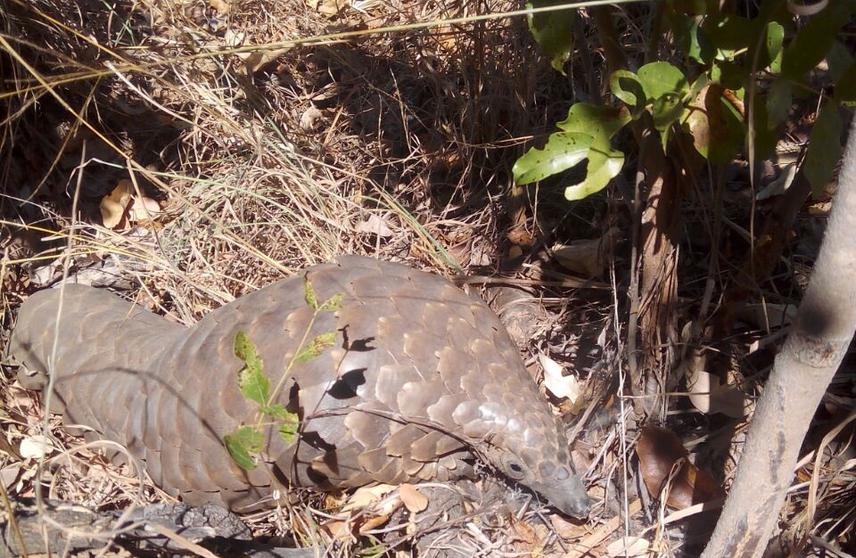Judith Natsai Theodora Kushata
To instigate conservation awareness of pangolins and preservation of their habitats through deliberately strengthening site protection at pangolin strongholds in Zimbabwe

Pangolin.
Of the 8 extant pangolin species, 4 occur in Asia and 4 in Africa. Unique in its behaviour and appearance, there is no other animal quite like a pangolin in Southern Africa. In Zimbabwe a pangolin is a culturally significant animal, being both revered and respected, but ultimately persecuted and this is why it is listed as a Specially Protected Species in the country. Despite pangolins being protected by national and international legislation throughout their range, poaching and habitat loss are understood to be severely depleting populations. In particular, illicit hunting for illegal international trade takes place, predominantly in Asia, where the meat of the animals is consumed and their scales used in traditional medicines. However, evidence now suggests that pangolins in Africa are under similar threat from intercontinental trade. Local perceptions on pangolins in Zimbabwe which range from fear to adulation exacerbates their precarious situation.
In tandem with an accelerating demand for pangolin meat and scales in Asia, there is a proliferation in lucrative illegal pangolin hunting and trade. African pangolins are increasingly being targeted for this illegal trade with a net effect of endangering their biodiversity and is Zimbabwe is no exception. Pangolins, also known as scaly anteaters, are eutherian, placental mammals inhabiting tropical and subtropical forests, dry woodlands, and open savannah regions. Pangolins are predominantly nocturnal, elusive and secretive animals predate almost exclusively on ants and termites. But worryingly, with two exceptions, there are no population estimates for any species of pangolin anywhere and little is known about pangolin ecology, distribution and biology or their conservation needs making it difficult to determine the severity of these threats to pangolin populations in Zimbabwe. Therefore this project intends to investigate pangolin ecology, distribution and perceptions in the largest protected area, Hwange National Park and its peripheries in Zimbabwe. The ultimate aim is to instigate conservation awareness of pangolins and preservation of their habitats through deliberately strengthening site protection at pangolin strongholds in Zimbabwe.